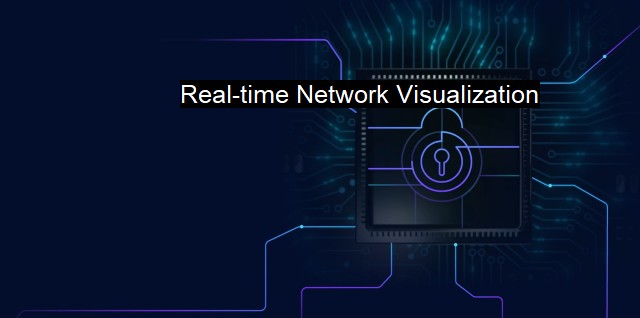What is Real-time Network Visualization?
Enhancing Cybersecurity with Real-time Network Visualization: A Tool for Efficient Detection and Response to Cyber Threats.
In the context of cybersecurity and antivirus applications, real-time network visualization can be portrayed as a highly dynamic field, bringing a paradigm shift in network management and security protocols. It involves real-time visualization and monitoring of a network’s complex configurations, traffic flow, and other activities to unveil security vulnerabilities effectively, while ensuring optimal utilization of available resources."Real-time Network Visualization" can be understood as a dynamic depiction of network activity. It creates an immediate visual insight into the network's traffic, devices, interactions, and the onset of threats, all updated in real time. The use of this visual information helps in making immediate and informed decisions regarding the network's security posture. This reduced time to respond is highly useful for cybersecurity and antivirus measures where threat detection and quick response is key.
Real-time Network Visualization provides pictorial or graphical representation of essential network attributes, like nodes and links, along with their real-time performance metrics. This interactive strategym aids to discover insidious vulnerabilities, detect intrusion attempts, and prevent cyberattacks, thereby forming an essential part of cybersecurity mechanism. Nodes can represent interconnected devices or networks, while links (or edges) illustrate connections between them. By tracking the network's behavior at distinct intervals, we can explore real-time traffic sources, destinations, timings, flow variations, and several active connections to strengthen security.
Multifarious display capabilities that are attached with real-time network visualization are layered over the network topology to provide an instant summarization of exhaustive infrastructure details. This comprises of the visibility to high volume and rapid velocity of data and metadata that preclude human-readable analyses. As a part of its representation, this technology showcases geographic maps, treemaps, choropleth maps, three-dimension graphs, node-link diagrams, adjacency matrices, holographs etc. utilized towards the prognosis of attacks.
Under cybersecurity, network visualizations serve as a robust tool during decisive moments, averting catastrophic outcomes of data breach. When an anomaly or threat is detected, deviation from typical network behaviour is revealed immediately on the visual interface. This alerts cybersecurity authorities, initiates corrective actions, and mitigates potential damage. Hence, strategically positioned colored objects on the visualization interface assist to streamline threat inspection and security responses.
In the antivirus context, real-time network visualization proves very advantageous. The software can keep vigil over network flows and immediately flag off any irregular activities that potentially signal malicious threats. More specifically, visualization aids in identifying patterns of unusually high network traffic, locating sources of unrecognized external access attempts, or pinpointing malicious files, thereby diminishing the probability of systems being infected by malware or viruses.
Real-time network visualization bridges the gap between raw, impenetrable data and comprehensible intelligence. It generates actionable insights revealing what exactly transpires within the network – exposing secret passages, unseen traffics, illicit users, or fulfilment of security protocols. Far reaching as it is, this tool extends its arms towards compliance reporting, capacity planning, performance monitoring, disaster recovery preparations etc.
Real-time network visualization is not a panacea but surely is an implausible tool for early-warning, shedding light on the darkest corners between various elements of a network - to proactively deal with cyber-attacks, by visually uncovering potential threats before they can cause considerable harm. It serves immense benefits for both cybersecurity by enabling threat detection and prompt response, and antivirus protection by aiding early detection and prevention of infections, affirming its significance in contemporary dynamic cyber environments. The evolving future holds colossal potential for the amalgamation of real-time network visualization to the fabric of inventing enhanced cybersecurity and antivirus schematics.

Real-time Network Visualization FAQs
What is real-time network visualization?
Real-time network visualization refers to the way in which computer networks are visually represented in real-time, allowing users to see network activity as it happens. This technology is often used in cybersecurity and antivirus software to monitor networks for suspicious activity and threats.How does real-time network visualization help with cybersecurity?
Real-time network visualization allows cybersecurity professionals to quickly identify and respond to threats that may be lurking on a network. By providing a real-time visual representation of network activity, security analysts can quickly identify anomalies or suspicious behavior and take action to mitigate potential threats.What are some common features of real-time network visualization software?
Some common features of real-time network visualization software include the ability to drill down into individual network nodes, track network traffic in real-time, and generate alerts when suspicious activity is detected. Additionally, some software may provide historical data and trend analysis to help identify patterns over time.Is real-time network visualization only useful for large organizations?
While real-time network visualization can be particularly useful for large organizations with complex networks, it can also be beneficial for smaller organizations that want to ensure their networks are protected from potential cyber threats. In fact, any organization that relies on computer networks can benefit from real-time network visualization to monitor and secure their networks.| | A | | | B | | | C | | | D | | | E | | | F | | | G | | | H | | | I | | | J | | | K | | | L | | | M | |
| | N | | | O | | | P | | | Q | | | R | | | S | | | T | | | U | | | V | | | W | | | X | | | Y | | | Z | |
| | 1 | | | 2 | | | 3 | | | 4 | | | 7 | | | 8 | | |||||||